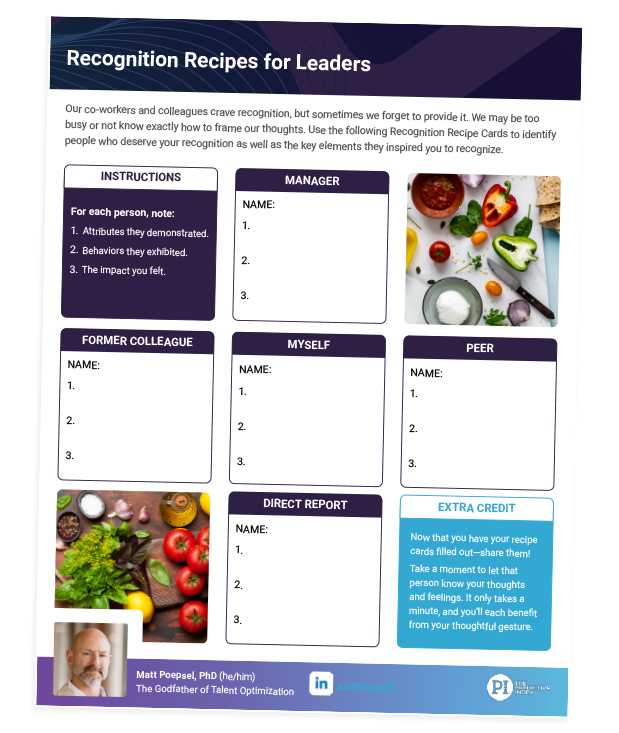I can hold my own in the kitchen, but I’m not nearly as capable as my bride. I take three times as long to prepare any dish, and I lack her ability to make an entire meal appear at once with each serving delivered at exactly the right temperature.
There’s a bigger telltale difference, however: I have to follow recipes to the letter.
Along my culinary journey, I’ve grown to appreciate the simple recipe card. It provides three key elements:
- A list of ingredients
- The steps needed to prepare the dish
- A description of the yummy result (should everything go right)
It’s no wonder I think of recipe cards when coaching clients about the importance of employee recognition.
Recognition makes employees feel a heightened sense of belonging and value. It costs almost nothing, but it can be priceless in terms of the morale and motivation it can produce. Recognition isn’t reserved for manager-to-direct reporting relationships. Gallup, for example, observed that: “The best managers promote a recognition-rich environment, with praise coming from every direction and everyone aware of how others like to receive appreciation.”
I’ve found that peer recognition creates team cohesion, and Paycor advises managers not to overlook recognition for part-time and hourly workers as well. Recognition is nearly universally considered to be a key ingredient (pun intended) in organizational success.
There’s just one problem: Few of us know how to deliver proper recognition.
This brings us back to our handy recipe card.
I’ve created a simple worksheet for you. It follows Gallup’s lead by asking you to think about those around you in terms I call “up, down, and sideways.” For each person you identify, the worksheet offers simple instructions on how to outline your recognition message.
Here’s an example to help you visualize how this works.
Recognition recipe
1. Attributes: creative, relatable
2. Steps: wrote a blog post, created a worksheet
3. Impact: motivated to recognize others
Recognition message:
“Hey Matt. I really appreciate how creative you are and how your offbeat analogies are so relatable. This week, when you created a recipe-themed worksheet and blog post, it really motivated me to recognize those around me using your simple framework. I know they’ll appreciate it!”
Simple, right?
Time to get cooking! Download the worksheet now, and use it to prepare a few tasty recognition recipes for those around you. Then forward it to your team members, and encourage them to do the same.










